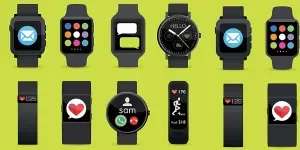Educational electronics represent a pivotal tool for modern learning, combining digital interactivity with engaging, practical experiences that encourage critical skills like problem-solving, creativity, and adaptability.
From coding kits to smart tablets, these devices support learning across subjects, bringing abstract concepts to life through hands-on applications. For students, they bridge the gap between theory and real-world practice, while educators benefit from enhanced instructional flexibility. Designed for both individual and group learning, educational electronics have evolved to meet a wide range of educational needs and formats, from classrooms to remote environments.
Table of Contents
Key Types and Uses of Educational Electronics
Interactive Learning Tools
STEM-Based Devices
Smart Devices for Classroom and Remote Learning
Current Market Overview and Trends
Growth in Demand for Multi-Functionality
Rising Focus on Personalized and Inclusive Learning
Essential Considerations for Selecting Educational Electronics
Educational Value and Age Appropriateness
Device Durability and User-Friendliness
Integration with Hybrid Learning Platforms
Safety and Security Compliance
Top-Rated Models and Their Key Features
Leading STEM Kits for Hands-On Learning
Top Tablets and Laptops for Versatile Use
Best Smart Learning Gadgets for Interactive Experiences
Conclusion
Key Types and Uses of Educational Electronics

Interactive Learning Tools
Interactive learning tools are crafted to engage students actively, especially in early education, by encouraging hands-on activities that build foundational skills. These tools, such as touchscreen tablets and beginner-friendly robotic kits, allow young learners to explore new concepts through direct interaction, turning abstract ideas into relatable learning moments. Many interactive tools integrate game-like elements and immediate feedback to heighten engagement and retention, creating an immersive learning experience that adapts to varying skill levels and learning speeds. This adaptive approach fosters a positive environment for both individual growth and group dynamics within classrooms.
STEM-Based Devices
STEM-focused educational electronics are vital in providing students with practical exposure to science, technology, engineering, and mathematics. Coding robots, circuit-building kits, and 3D printing tools are popular choices that help develop analytical thinking and problem-solving skills. These tools go beyond technical skills, sparking creativity and collaboration among students. Coding robots introduce fundamental programming concepts, while circuit kits offer insights into how electronic components function together. As industries increasingly prioritize tech-ready talent, introducing STEM education early supports students’ readiness for future careers and innovations in the field.
Smart Devices for Classroom and Remote Learning
With the expansion of hybrid education, smart devices that support both classroom and remote settings are in high demand. Tablets with robust battery life and user-friendly interfaces, as well as digital whiteboards that promote collaborative learning, are widely favored for their versatility. These devices provide a seamless blend of in-person and virtual learning capabilities, enabling teachers to share content in real-time across various locations. Additionally, remote-friendly devices feature cloud storage and educational app access, ensuring students and educators can stay connected and productive regardless of their learning environment.
Current Market Overview and Trends

Growth in Demand for Multi-Functionality
As of 2024, the market for educational electronics, including satellite TV receivers, is shifting toward multifunctional devices that support a wide range of applications. This trend is especially evident in education, where devices now often combine traditional satellite capabilities with streaming and interactive features, catering to varied learning needs. Valued at approximately USD 10.2 billion, the global satellite TV receiver market is projected to grow to USD 13.5 billion by 2028, with a compound annual growth rate (CAGR) of around 4.8% from 2023 to 2028. This rising demand for adaptable and integrated solutions aligns with the education sector’s ongoing shift toward multifunctional tools that bridge traditional and digital learning formats, according to insights from Cognitive Market Research.
Rising Focus on Personalized and Inclusive Learning
Another key trend shaping the market for educational electronics and satellite TV receivers is the drive toward personalized and inclusive learning. As adaptive technology continues to advance, products increasingly support tailored educational experiences that cater to diverse student needs. Devices with adaptive learning capabilities offer features like interactive modules and customizable interfaces, helping students of varying abilities engage effectively with content. Additionally, by integrating accessibility features, these technologies contribute to equitable educational opportunities across classrooms. This focus on personalized and inclusive options reflects educational institutions’ dedication to providing learning environments that accommodate a range of backgrounds and capabilities.
Essential Considerations for Selecting Educational Electronics

Educational Value and Age Appropriateness
Choosing educational electronics requires careful attention to the age and developmental stage of the students they will serve. Products should offer educational value aligned with learners’ cognitive abilities, ensuring tools support age-appropriate skill-building. For instance, young students benefit from devices focused on interactive play and foundational skill development, while older students may need more advanced tools that foster problem-solving and critical thinking. Ensuring that products match the educational goals of each age group enhances engagement and allows students to gain relevant knowledge and skills progressively.
Device Durability and User-Friendliness
Durability and user-friendliness are paramount, particularly in school environments where devices are used intensively. Robust construction is essential, as these devices often face wear and tear from regular handling by multiple students. In addition to physical resilience, user-friendly interfaces enhance usability, allowing students to navigate functions easily and teachers to integrate devices into lessons seamlessly. Devices with intuitive controls or simplified interfaces reduce the learning curve, making them more accessible for students and educators alike. This combination of durability and ease of use contributes to a more effective and lasting educational experience.
Integration with Hybrid Learning Platforms
In today’s increasingly hybrid educational landscape, compatibility with various learning platforms is crucial. Devices should be able to function across in-person, remote, and blended settings, supporting flexibility in learning. For example, tablets and laptops with cloud storage capabilities enable easy sharing of materials, and platforms like digital whiteboards can synchronize classroom activities with remote learners. Additionally, products compatible with popular learning management systems (LMS) allow schools to streamline workflows and content delivery, ensuring students can engage consistently from any environment. This adaptability makes it easier to incorporate electronic tools into diverse learning models, enhancing their relevance and usability.
Safety and Security Compliance
Safety and security features are essential in educational electronics, as student privacy and well-being are critical considerations. Devices should comply with industry-standard safety guidelines, including certifications for data protection to prevent unauthorized access. As the use of AI and data analytics grows, educational technology also needs to address cybersecurity threats. Schools and institutions should look for devices equipped with robust data protection and privacy safeguards, ensuring compliance with relevant laws and minimizing exposure to cyber risks. Reliable security features not only protect student information but also build trust in educational technology as a safe learning resource.
Top-Rated Models and Their Key Features

Leading STEM Kits for Hands-On Learning
STEM kits designed for hands-on exploration help students develop critical skills in science, engineering, and programming by guiding them through the assembly of models like robots and circuits. Many kits combine physical construction with digital interaction, letting students apply practical skills while understanding basic programming and engineering. These kits cater to different age groups and provide adaptable learning pathways, allowing students to learn progressively from basic concepts to more advanced problem-solving techniques.
Top Tablets and Laptops for Versatile Use
Tablets and laptops tailored for educational settings support various learning needs, offering features such as long battery life, intuitive touch interfaces, and access to a wide range of educational applications. Tablets are ideal for younger students due to their ease of use, while laptops are better suited for more advanced students, supporting tasks that require more computational power and cloud-based collaboration. Lightweight devices with fast startup times are particularly valued, especially when shared among students for different classroom activities.
Best Smart Learning Gadgets for Interactive Experiences

Smart learning gadgets, including AR and VR-enabled devices, add an immersive dimension to education, allowing students to interact with complex concepts through simulations and 3D visualizations. These tools make abstract topics like anatomy or geography more accessible by creating an engaging, hands-on experience. Programmable robotics and interactive tools also help younger students experiment with coding and engineering in a playful, approachable format, making learning more dynamic and enjoyable.
Conclusion
Selecting the right educational electronics is essential in shaping a supportive learning environment that aligns with modern educational goals. With thoughtful choices, institutions can invest in tools that foster skills from critical thinking to digital literacy, meeting the needs of diverse learning styles.
Durable, multifunctional devices, whether tablets, robotics kits, or AR/VR tools, are more than just resources—they’re investments in adaptable, future-ready education. As technology continues to evolve, well-chosen educational electronics ensure that students receive an enriched, engaging, and inclusive educational experience.



